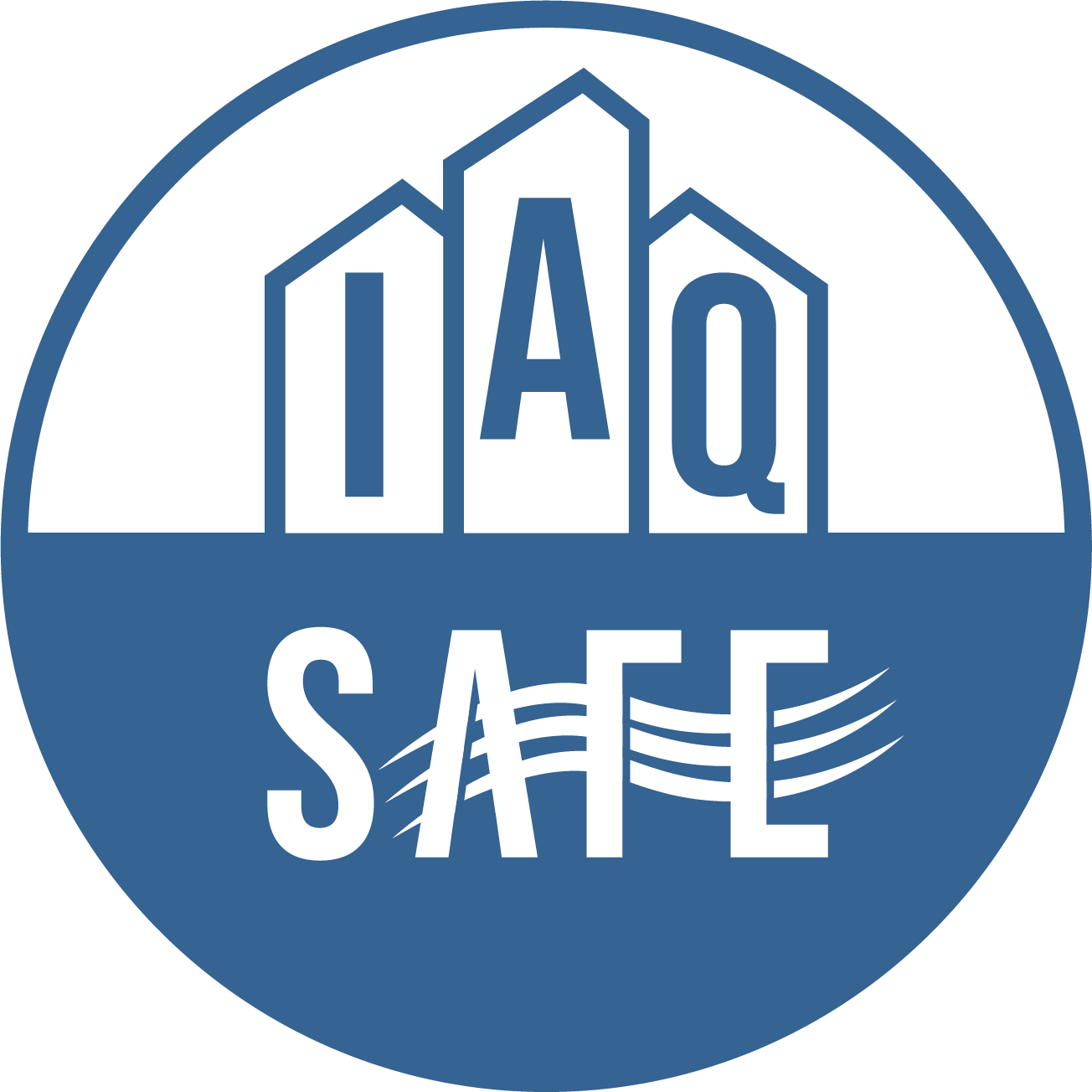
Indoor Air Quality Information
This page is the place to go for all things Indoor Air Quality Monitoring!
What is IAQ and why it is the hottest topic in town?
What are the regulations and standards?
The 5 metrics of IAQ and best practices
What is Indoor Air Quality Monitoring?
Air Quality Monitoring is all about ensuring harmful particles and pollutants air removed from the air we all breathe everyday.
Recent studies have shown that indoor air quality can be anything from 2 - 5 times worse than outdoor air quality.
There are 5 main ways to improve Indoor Air Quality. Often a combination of the 5 is used to achieve the greatest results.
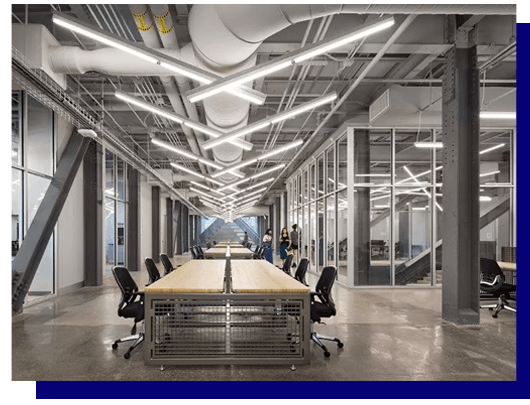
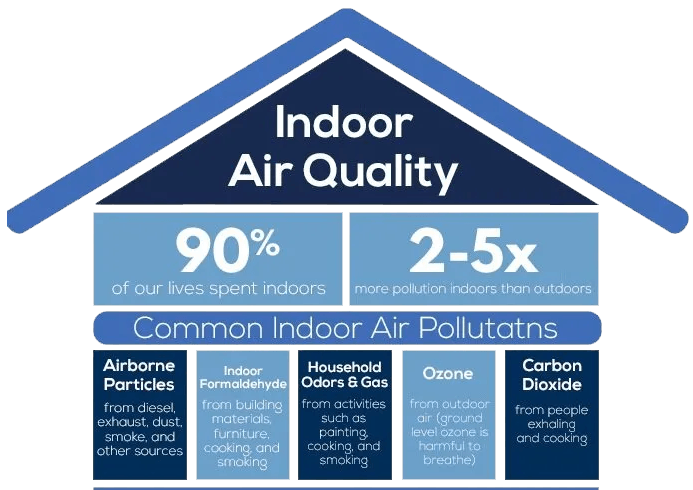
Why is IAQ the hottest
topic in town?
Airborne viruses such as COVID-19 and the sheer chaos the pandemic caused over a 2 year period have highlighted more than ever the huge importance in minimising indoor air pollutants and maximising indoor air quality.
Improving Air Quality will not only help increase your carbon footprint offset, it will often save money throughout an organisation. A healthier environment often means less staff downtime due to feeling unwell, a happier workforce, with better efficiency and higher productivity.
There is evidence to show cognitive process decreases with CO2 levels of 1000PPM or above. Levels of 2000PPM and above can cause severe headaches and increased staff downtime.
How does Poor Air Quality Effect people?
Indoor Air Quality or IAQ is the measure of common air pollutants that can be found within the buildings we all live and work inside of everyday. There are several elements that make up this measurement: CO2, Particulate Matter 2.5, VOCs, along with ambient temperature and humidity as additional occupant comfort metrics.
It is proven that high CO2 levels cause headaches, fatigue, and loss of concentration in people and is a known factor in the reduction of health within the occupants suffering these conditions in their building environment. Minimising the levels of CO2 will improve your building health and will enable an increase in staff productivity.
The risk and threat of COVID-19 and other airborne pathogens are greatly reduced with good building ventilation. High CO2 is an indication of poor ventilation, and it is imperative action is taken to reduce the CO2 levels and increase the ventilation of the building environment.
Studies have concluded that environments with high CO2 and poor ventilation reduce the productivity of staff and have numerous complaints from building occupants. Staff turnover and sickness time is increased, and morale is affected negatively.
The 5 Methods of controlling
Indoor Air Quality
- Source control 2. Humidity control 3. Improve Distribution 4. Higher Filtration 5. Better Ventilation

Source Control
By far the best strategy in combating poor indoor air quality is to stop the source from producing harmful particles and pollutants.
Source control is often a cheaper to implement than the other choices available. Simple changes in life style can drastically reduce the number of pollutants brought into living spaces.
Changing cleaning products and undergoing cleaning routines more often can all help to reduce the source of the pollution.

Humidity Control
This one is simple, keep humidity between 40 - 60% indoors. High humidity greatly increases the development of dust mites, mold spores and other biological pollutants.
By controlling the humidity you reduce the risk of sore throats, asthma and further raspatory illnesses.

Improve Distribution
A key factor, especially for new builds is to ensure the distribution of air is detailed in the design. The ideal being using the physics of air as we know it to maximise air flow and distribution efficiency.
Having fresh air added from the floor or base of walls and be removed via ceiling grills takes advantage of convection currents found in room spaces. This gives occupants fresh air to breathe, with the air we breathe out going up from faces to the extraction zones.

Higher Filtration or Purification
Perhaps the most spoken about in the fight against COVID-19, and for good reason.
The simple fact is that although most air filters or HVAC systems have air filtration elements, this is mainly for the sake of not allowing larger parts of dirt or dust to get clogged up in the system. The filter has very little benefit for Air Quality.
By installing high MERV rating filters with better materials and manufacturing you can vastly improve the Air Quality entering your buildings. This alongside 1 or more of the other ways of controlling air quality is the best way after removing the pollutant source to control the quality of air reaching building occupants.
Air purifiers work in much the same way as filtration. Units often with intake fans, suck in the air form a space and pass it through HEPA filters before allowing it back into the rooms space. Air purification is often and add-on to a system and is not used without other control methods.

Better Ventilation
It is widely known that good ventilation dilutes the number of particles in the air and as such is a highly used method in decreasing the risk of COVID-19.
Air Ventilation is the exchange of Outdoor and Indoor Air. Increasing this exchange simply means more fresh outdoor air is pushed into a space while the stale indoor air is pushed out of that space. Opening windows or natural ventilation can only ever do so much and is dependent on weather conditions and outside temperature.
Mechanical Ventilation is the best option to implement when improving your ventilation is high on the action list to improve a specific buildings or sites Indoor Air Quality.
LAWS, LEGISLATION & RESPONSIBILITIES
There is no current directive that regulates Indoor Air Quality in the UK. However, it is firstly becoming recognised as a key factor in sustaining healthy lifestyles and links can be made to many factors of poor indoor air quality having an adverse effect on the human population. There are many recognised elements that make up Indoor Air Quality that are regulated by the UK government and or other health directive bodies such as the WHO .
Indoor Air Quality Guidelines for selected Volatile Organic Compounds (VOCs) in the UK - Public Health England
European Standard for Ventilation EN13779 - CEN
WHO GUIDELINES FOR INDOOR AIR QUALITY - Selected Pollutants - World Health Organisation
Air Quality Awareness
The next best thing to preventing poor air quality as mentioned in the 5 methods of controlling air quality is to actually be aware of the quality of the air of which you breathe.
It is impossible to see air pollutants, it is impossible to know the quality of the air, even with every controlling measure in place unless the air itself is monitored.
There are a range of IoT sensors available that can remotely monitor room spaces and send readings on a variety of metrics. CO2 is high on lists as can be used secondarily as a COVID -19 sensor. VOCs, Carbon monoxide as well as nitrogen oxide, Sulphur dioxide and Radon are all common pollutants found in concentrated levels within buildings and can all be monitored to better understand the quality of air within the building space.

The world has changed!
The world has changed! This is not an opinion; it is a fact. Since Early 2020 when COVID-19 first hit the world, so many things have changed. Although we are now in a time of recovery and the restrictions on our lives do seem to have been lifted, many people are still working from home or ‘remotely’ as it is often referred to, many people are not going out as much as they did, many buildings have reduced staff numbers and many disruptions still occur in the aftermath.
- COVID-19 – Unfortunately, COVID-19 is still a big problem effecting so many aspects of life. The disruption of staff being off from work and the knock on effect of isolating is causing huge stress on the infrastructures in place across many industries.
- Access to sites and assets – With many organisations reducing staff numbers, accessing sites and assets within sites is becoming more difficult.
- Missed site visits – With many staff having to take unexpected time off from work, many planned visits for scheduled manual monitoring programs are not being carried out on time
- Missed critical readings being recorded – Many assets, especially those hard to reach are being missed from visits as there is no access available or no one to chaperon visiting engineers during planned site visits.
Remote IoT Sensors vs BMS
Remote IoT Sensors
This technology has opened the world of remote monitoring to everyone and everything. All sensors are designed to be retro fitted to assets, enabling them to be monitored in the same way a BMS systems does within more complex buildings and sites. With a fully modular approach, Remote IoT Sensors allows users to monitor their highest needing assets first and build their network up over time. Begin your journey with Legionella Watch and Remote Temperature Monitoring, simply keep adding new sensor types to expand your network, end your journey with an easy to manage, more compliant and Smart building.
BMS
Stands for Building Management Services or Systems. An approach used in large and complex buildings with a full complement of building services such as HVAC, Chilled and Hot Water and Heating, Lifts or elevators, Fire Alarms, Refrigeration, and Security Systems. All of these will be connected via a LAN (Local Area Network) to a Head End Terminal to be monitored by on site facilities staff. BMS systems are installed during a buildings construction and are very expensive to implement. They are normally focused on plant equipment with the further reaches of the system left unmonitored. The cost to extend a BMS to include these elements is often prohibitive, as the installation and commissioning of hard wired sensors after construction is completed can cause huge disruption.
Remote IoT sensors can be used to enhance existing BMS systems at a fraction of the cost. All sensors are plug and play and can be added to the network as and when they are required or desired. Grow your building environment data and see your building management optimisation in a new and smarter way!
Remote IoT Sensors vs BMS
Monitoring System
BMS
- Reduce Maintenance and repair costs.
- Provides a better working environment.
- Environment Friendly.
- Remote access means little or no down time.
- Security Risks
- Data Collection is difficult
- It is very expensive
- Installed during a building’s construction
remote iot sensors
- Reduce Maintenance and repair costs.
- Provides a better working environment.
- Environment Friendly.
- Remote access means little or no down time.
- Data Collection is easy
- It is not expensive.
- Designed to be retro fitted.
- Makes tasks easier.
- Security Risks
What is Remote Monitoring?
Remote Monitoring is a general term for any remote sensor monitoring any type of asset. Normally battery powered and with wireless data transmissions, remote sensors are changing the world we live in. Sensors send data to IoT Network gateways which then transmit it to hosted data servers connected to browser based software applications displaying the data on user dashboards. The ability to visualise data for so many aspects of building management give huge control to the building managers. Precise decisions can be made, efficiency can be boosted, preventive maintenance can be adopted, and resources and finances can be saved.
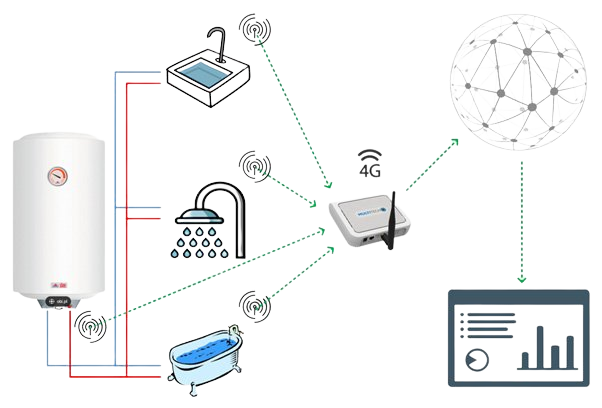
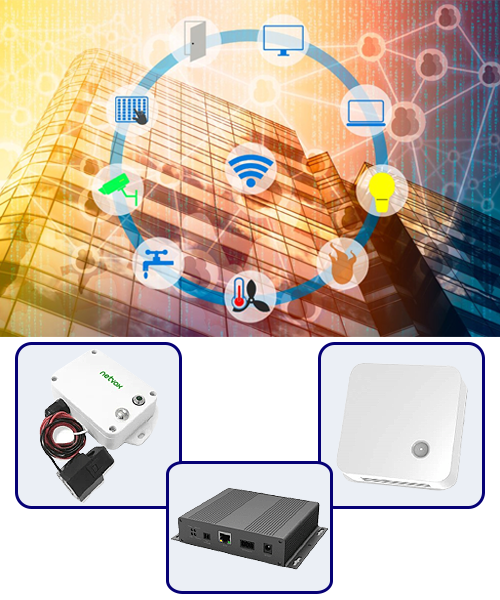
What is SMART Technology?
First, what does SMART mean? SMART stands for SELF-MONITORING, ANALYSIS and REPORTING TECHNOLOGY. It is a technology that uses artificial intelligence, machine learning, and big data analysis to provide cognitive awareness to objects that were in the past considered inanimate.
There are 3 main types of Smart Technology.
Internet of Things (IoT) - Describes the network of physical objects “things” that are embedded with sensors, chips, software, online connectivity, analytics, and applications to bring fixed physical objects to life. These devices create significant value, they are innovative, scalable, and automated.
Smart Connected Devices – Usually connected to the internet or Bluetooth and controlled remotely, smart connected devices can offer a tailored user experience but must be physically managed given that they don’t adapt to the extent IoT devices do. Smart Phones or Smart Bulbs are an example of Smart Connected Devices.
Smart Devices
- With reduced automation, no internet connection required, and of a programmable nature, smart devices, for instance, smart washing machines, provide specific personalized services at a particular time.
The whole process from installation to the updated weekly report has been fantastic.
Its purpose was to demonstrate how a newly installed system was operating for a 3-month period, so we could iron out any issues, or flag up any areas of concern before full hand over to the client. The real time data allowed us to make several minor adjustments and changes to achieve satisfactory temperatures throughout the property that would not normally be picked up.
Many Thanks for all your efforts, we shall definitely utilise this system on projects going forward
